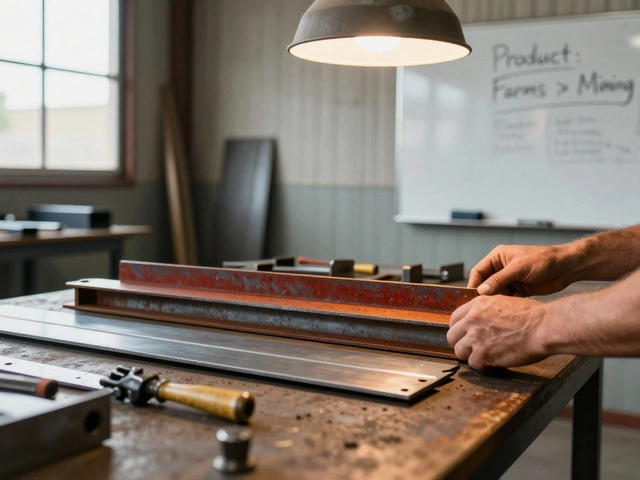How to Import Furniture from India to the USA: Shipping Tips, Legal Hurdles, and Real Costs

If you ever strolled through the furniture markets in Delhi or Jaipur, you know that Indian furniture has serious style. Thick sheesham wood coffee tables, hand-carved swings, inlaid sideboards—nothing says warm and unique quite like the real deal. Now, here’s the thing: people dream of carrying these treasures across continents to their new homes. But can you really just wrap that massive four-poster bed, load it onto a ship, and pick it up in New Jersey? Well, it’s possible, but it’s not a walk in the park.
I’ll break it all down, from the maze of red tape, to what stuff actually gets through US customs, the secret costs, and how you dodge rookie mistakes. This isn’t just about wrapping a chair in bubble wrap. There’s paperwork that’ll make your eyes water, shipping options that range from “cheap but slow” to “crazy fast but buy-a-second-house expensive,” and rules that change if even one tiny speck of dirt is found clinging to your legs of your beloved jharokha mirror. Ready to see what it really takes?
Understanding Rules and Paperwork for Importing Furniture from India to the USA
First up, let’s cut through some myths. Can you legally bring furniture from India into the United States? Yes, you can. But US Customs and Border Protection (CBP) does not wave you through just because your coffee table has lovely brass inlay. They see every shipment as a possible risk—be it pests, illegal wood, or counterfeit goods. You need the right paperwork, and it needs to list out everything clearly, from materials used to finish on the wood to country of origin. It’s not enough to say “antique chair” or “table.”
Here’s what’s required for safe, legal entry:
- Bill of Lading: The shipping company creates this and it lists everything you’re moving.
- Commercial invoice: Lists the real value. Don’t fudge this—CBP has seen every trick under the sun. If they suspect you’re lowballing, there are fines and they might even seize the stuff.
- Detailed packaging list: Every piece, size, weight, material.
- AIS (Automated Import System): This electronic data lets US customs screen what’s coming in.
- Declaration of wood origin: Especially if your furniture is made of rare woods. Sometimes it’ll need a CITES permit if any threatened species are used.
US customs has strict import rules about what kind of wood comes in, especially untreated wood. They will want proof your furniture is free from pests. Usually, that means fumigation or heat treatment certificates. If you bought modern, factory-made stuff from an Indian retailer, chances are, the company will already have this paperwork lined up.
Hand-carved vintage or heavily recycled furniture can get tricky. Sometimes CBP stops shipments because the old wood is hard to trace. If you’re shipping anything that could even remotely look like an “antique” or is more than 100 years old, you may have to prove it’s not protected cultural heritage (think Cambodia, but India’s export authorities can be strict too). Certain states in India tightly control the export of real antiques.
In 2022, the US imported nearly $1.3 billion worth of furniture from India—everything from side tables to full bedroom sets. Most of it sailed through without a hitch. But the CBP website lists wood-boring beetles and termites as common reasons for seizure. If you’re buying from trusted exporters, they’ll handle these requirements. Otherwise, get documentation for any treatment your items received.
| Paperwork Needed | Who Prepares | Key Details |
|---|---|---|
| Bill of Lading | Shipping Company | Shipment summary, tracking |
| Commercial Invoice | Seller/Exporter | Value, item list, importer/exporter info |
| Packing List | Seller/Exporter | Weight, volume, materials |
| Fumigation Certificate | Shipper/Exporter | Proof of pest-free treatment |
| Wood Origin Declaration | Seller/Exporter | Type and origin of timber |
| CITES Permit (if needed) | Indian Export Authority | For protected species |
Mess up the paperwork, and your new dining table could go into storage limbo, rack up storage fees, or, worst case, be destroyed by customs. Triple check before shipping!

Shipping Options and Hidden Costs of Moving Furniture
Let’s talk about getting that gorgeous Indian wardrobe from Chennai to Chicago. Air and ocean freight are your two main options. Air freight is way faster, but unless you’re bringing in a small side table, it’s too expensive for anything big. Ocean shipping is how almost everything moves. You get to choose between a whole container (FCL—full container load) or sharing with others (LCL—less than container load).
A 20-foot container fits about the contents of a small apartment. As of August 2025, shipping rates from India to East Coast USA ports (say, New York, Savannah) hover around $3,800–$4,500 for a 20-foot FCL. West coast? Usually about 10–20% more. LCL rates go by cubic meter, and while they’re cheaper upfront, your boxes might get bounced around various ports, so transit times shoot up.
Here’s where newbies get tripped up: the base shipping fee isn’t even half the costs. You’ll have to budget for:
- Inland trucking to get your furniture to the port in India
- Customs clearance and port handling charges in both countries
- Insurance (seriously, don’t skip this—containers fall, things break, water seeps in)
- Delivery from a US port to your final address
- Any surprise handling fees, demurrage (if customs clears slowly), or “exam” charges if CBP inspects your shipment
Let’s say you’re shipping a 10-piece living room from Mumbai to New Jersey. Total landed cost, soup-to-nuts, can end up 2 to 2.5 times your actual purchase price once you add everything above. And don’t forget US import duty. Furniture gets taxed at between 0% and 10%, depending on item type and materials—upholstered sofas are taxed higher than plain wooden chairs. Rugs and textiles also fall under different rules, so check HS codes (Harmonized System Codes) carefully with your shipper.
A fun fact: Many Indian exporters over-package furniture in thick plywood or crates. While this keeps things safe, it also bumps up the weight—and thus the price. Ask for efficient packaging. If you’re buying direct from Indian furniture stores, get a written quote for delivery all the way to your US door (known as DDP—Delivered Duty Paid) so you don’t get stuck with sticker shock when the thing lands stateside.
Last thing: Shipping delays are real. Even normal shipments can take anywhere from 5–8 weeks portal to portal. Monsoon season? Subtract another week, easy. Ports in the US can also back up for days, especially around holiday time.

Common Pitfalls and Pro Tips: What to Watch Out For
It’s easy to get caught up in the excitement of shopping for Indian furniture, but the import process is loaded with tripwires. Here are the biggest mistakes people make—and how to avoid them.
- Poor Measurements: Don’t just eyeball a sofa and assume it’ll fit. Metric and imperial systems are different. Ask your seller for measurements in inches, and compare them to your US home layout. Oddly shaped or oversized pieces can cost three times more to ship.
- Improper wood treatments: The US is strict about untreated or raw wood, especially mango and teak. If customs spots live bark, sap, or wormholes, they’ll likely refuse the item or order expensive treatments—on your dime.
- Not checking banned species: Rosewood and sandalwood exports are heavily regulated under CITES. If the product doesn’t come with the right permits, US customs can keep it, even if you paid top dollar.
- Paying cash upfront to unknown sellers: There are genuine artisans, but also plenty of scammers. Always pay through trusted platforms, and check reviews. Ask to see export documentation examples before you transfer any real money.
- Overlooking insurance: One container went overboard off the coast of Portugal just last year, loaded with wedding gifts and furniture. Insurance might seem like a boring add-on, but it’s lifesaver if customs rejects, shipment is lost, or stuff is damaged in transit.
- No agent in the USA: Customs brokers work wonders. They pre-screen paperwork, handle declarations, and walk your shipment through customs clearances. Their fee is nothing compared to what you’ll pay if you handle things yourself and get stuck.
- Wrong voltage/electrics: Some Indian furniture, like electrified lamps or built-in lighting, won’t work on US voltage without converters. Always double-check.
Shipping personal household goods? If you lived in India and are moving back, you might qualify for a duty exemption on used goods under a change-of-residence clause, but only for private moves. Commercial imports for resale never qualify.
One quirky but real fact: Indian furniture is often larger and heavier than its Western equivalents. That’s charming in a bungalow, but a third-floor Brooklyn walk-up with a narrow staircase can turn your prized wardrobe into a storage nightmare. Confirm delivery dimensions—including hallways and elevators.
| Common Pitfalls | Consequence | Pro Tip |
|---|---|---|
| Poor measurements | Shipping overcharges or return hassles | Always get precise dimensions in inches/feet |
| Lack of wood treatment certificate | Shipment delay or destruction | Request proof before shipment |
| Cash to unverified seller | No recourse if scammed | Use trusted escrow/payment systems |
| No customs broker | Weeks of delay | Hire an experienced US agent |
Summing up: Shipping import furniture from India to the USA is possible, but you need accurate paperwork, smart shipping choices, and a good sense of what to expect at American ports. If you love that old-school charm and craftsmanship, it’s totally doable—with a little patience and these tips under your belt. Don’t let a jungle of forms and fees stop you from filling your place with something unique from home.





